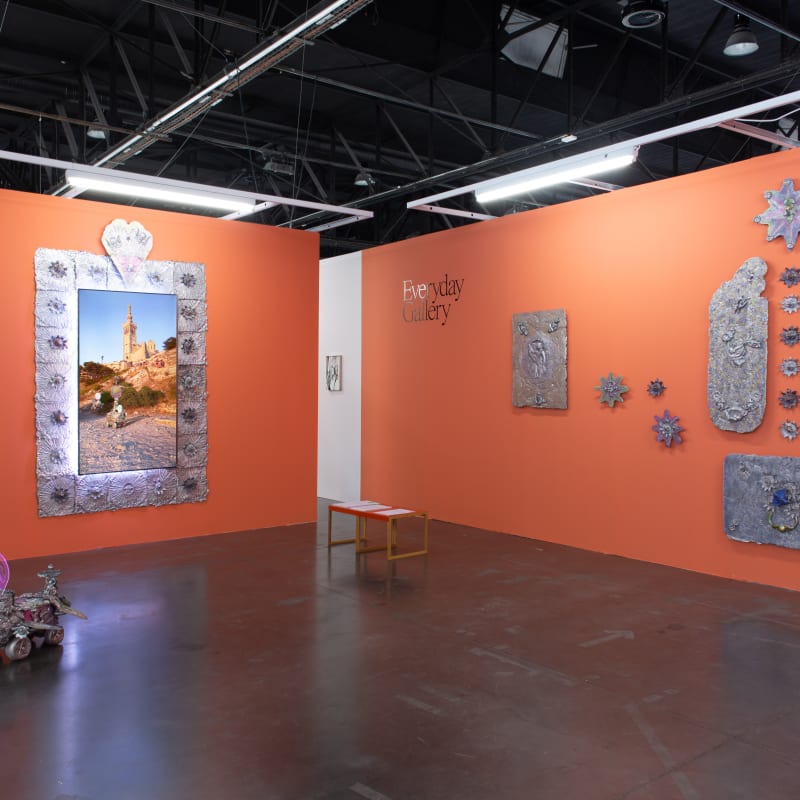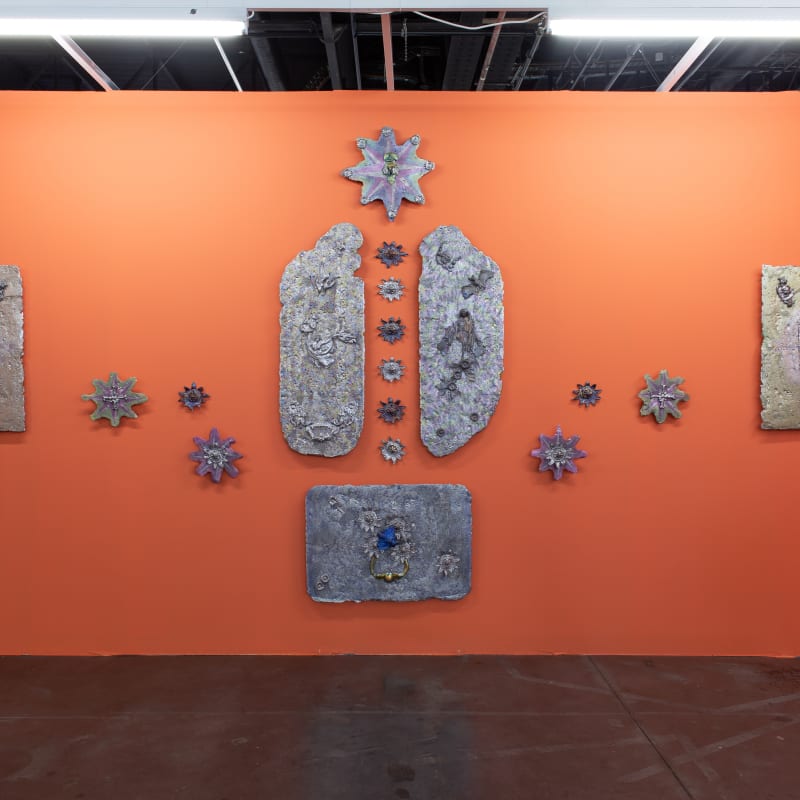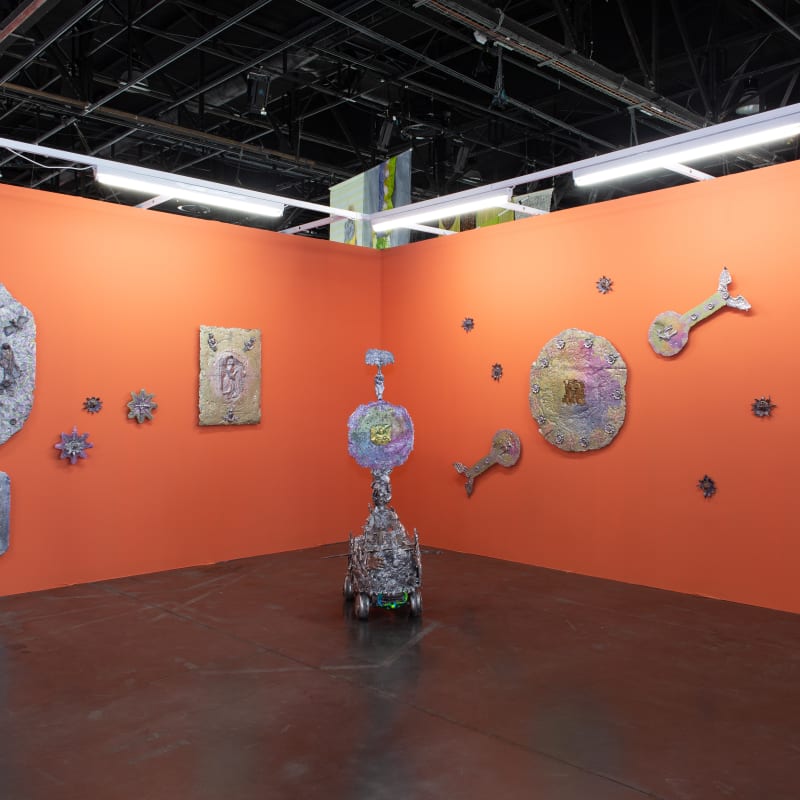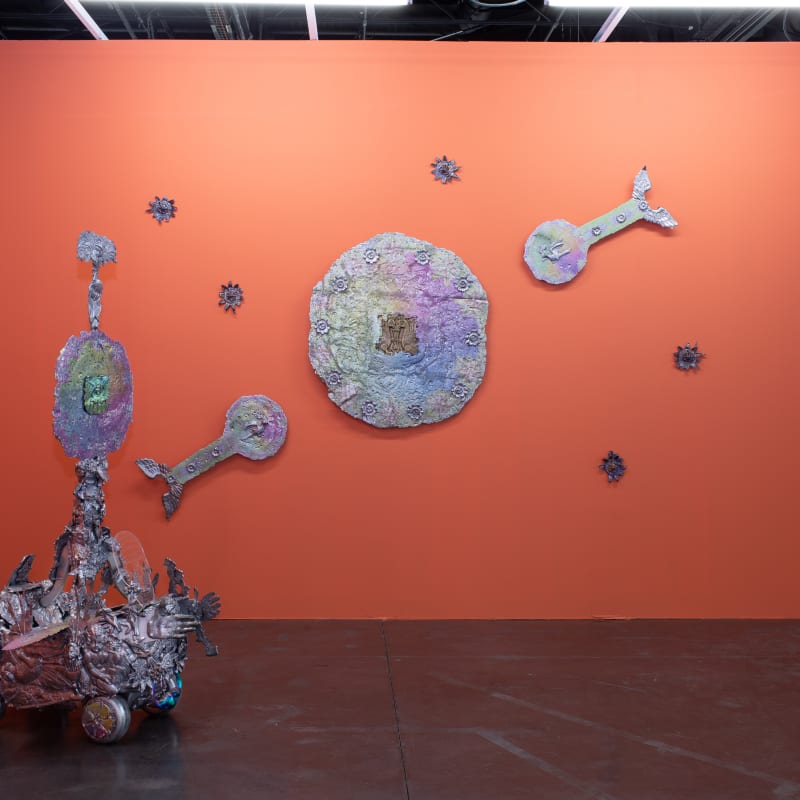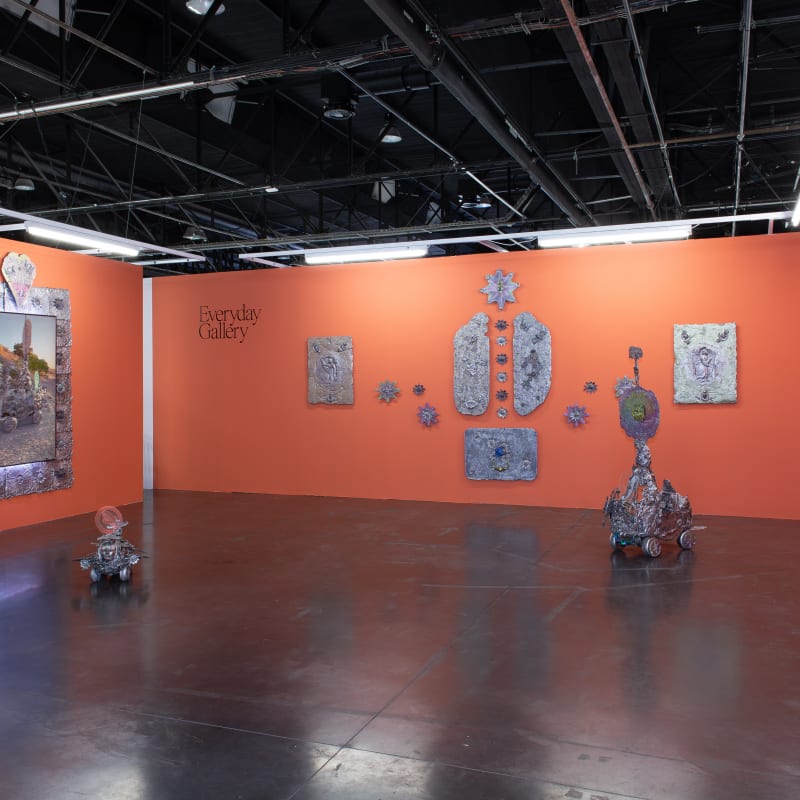
Jean-Baptiste Janisset researches our unconscious relation towards the spiritual. As the artist looks upon spirituality as a part of our collective history, Janisset tries to communicate this spiritual connection to the beholder through the usage of artisanal relics. By making various objects as tokens operating between historical references and embodying spiritual energy, Janisset tries to invoke the spiritual afterlife. To achieve this, Janisset uses symbols, like angels, bats, skulls, owls, or pentacles, hereby balancing the works on a juxtaposition between different cultures and religions.
While these artisanal relics appear cold at first glance, due to using zinc and tin as the main material, the works depict visual familiarities and bring a warm and mysterious atmosphere due to the usage of subtle and overwhelming colors. Only by submitting to the mysteriousness of the artwork, it becomes clear what intersectional play in humanity’s spiritual collectiveness is at play.
The booth for Art-O-Rama represents a narrative of this spiritual embodiment. Placing the works in a sand-colored surrounding, the works seem to indicate the long-awaited endpoint of a pilgrimage.
Completely surrounded with symbolism, the enclosed space forces the beholder to go into dialogue with the works. The body engages with the emanated energy. Where the question may arise how to relate to spirituality, the created site brings balance and harmony by being along with the spiritual effect in the first place. Not being bound to anything specific, there opens an all-embracing medium for our collective history and collective coming.
